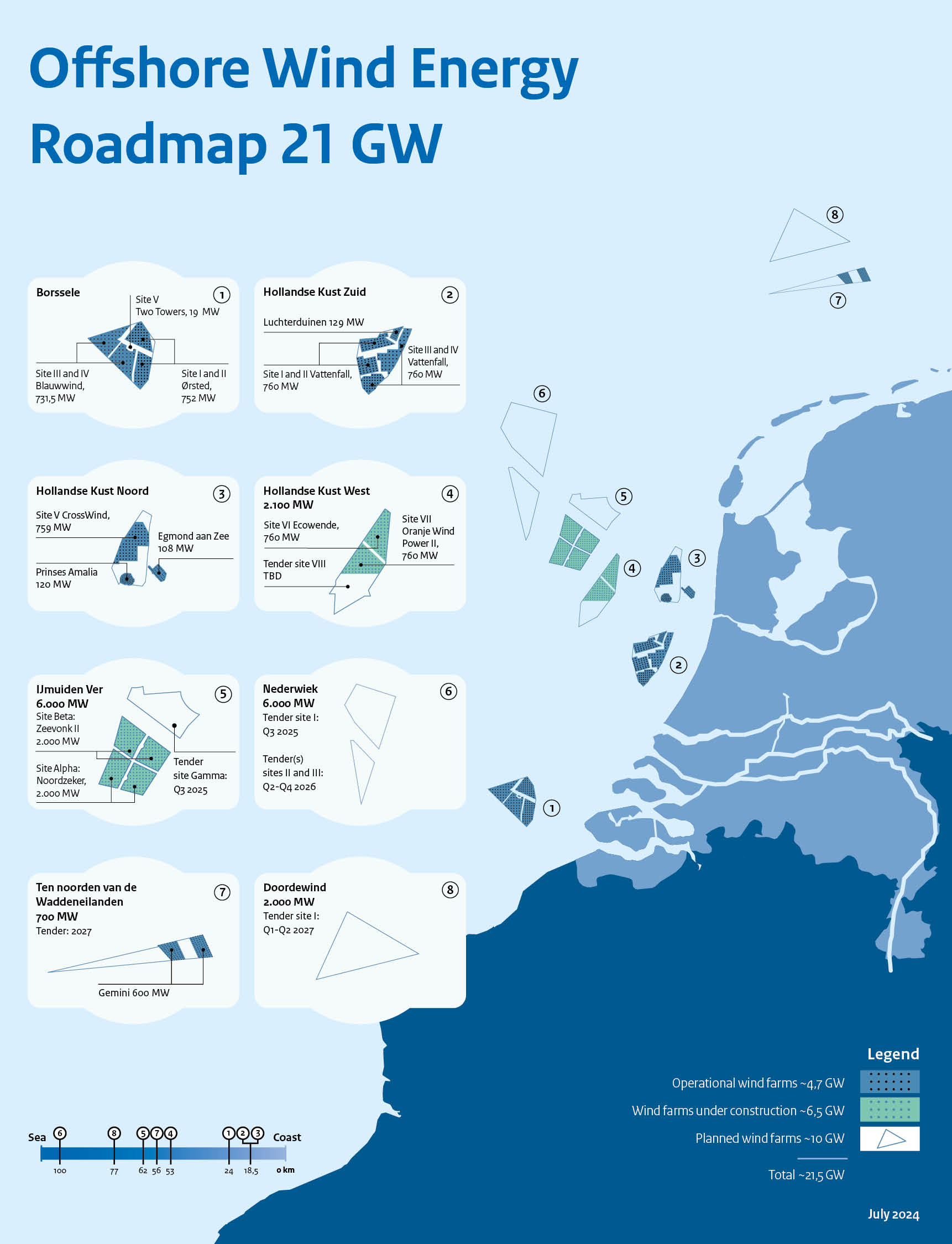The Government also designates the exact site location for each project and conducts the critical site surveys, which are all independently certified to the highest industry standards, and environmental impact assessments to ensure designs can be optimised, with the necessary information and studies made available to potential developers. As required under the Dutch Offshore Wind Energy, formal Wind Farm Site Decisions are subsequently published for each project. As the basis for project permits, these contain the full terms and conditions potential bidders must abide by regarding the design, construction and operation of the wind farms, while also allowing plenty of flexibility within that scope.
Once a Wind Farm Site Decision become irrevocable (final), a Ministerial Order outlining the tender rules for that site is published to give clear guidance to potential bidders. This covers, among other things, key deadlines for the tender procedure, bandwidths for the design of the wind farm (e.g. minimum and maximum capacity), requirements relating to construction and operation, eligibility criteria and financial requirements, and clear information about how bids will be assessed and ranked. At this point, the tender round is now officially open to potential bidders. Winners of the tender are usually confirmed within 13 weeks and granted the permit for the project.
The State is also responsible for cost-effectively building and operating the offshore grid that connects offshore wind farms to the onshore network. Transmission system operator, TenneT, has been officially appointed as the offshore grid operator for this purpose.
This pro-active approach works to reduce pre-bid investment risks, financing and societal costs. The Netherlands Enterprise Agency (RVO.nl), under the Ministry of Economic Affairs and Climate Policy, acts as the coordinating administrator (one-stop shop) for the Dutch offshore wind programme.
For further information on Dutch policy download the latest Dutch Offshore Wind Guide or visit RVO.nl
The Dutch Approach
The Netherlands has a stable policy environment for offshore wind development, with clear project pipelines and timetables outlined in a series of (updated) Offshore Wind Energy Roadmaps. The latest roadmap targets 21 GW of operating capacity by 2032.
As well as flexible rules and regulations for offshore wind development, the Netherlands Enterprise Agency (RVO.nl) co-ordinates all site studies for each wind farm. This approach provides greater certainty for developers, increases investor confidence, and has been proven to foster innovation and drive down overall costs for offshore wind projects.
The latest subsidy-free offshore wind tenders also have a strong emphasis on qualitative criteria, notably for system integration and ecological initiatives, rather than just lowest cost. This is to ensure smooth integration of the electricity from future offshore wind farms into the energy system, minimal impact on the environment and maximum benefit to society at reasonable cost. Options to use offshore wind generated electricity to produce green hydrogen are also under investigation.

